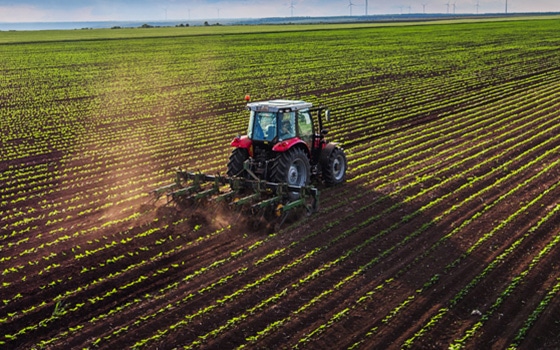-
InsightsClient Story - Agriculture and Rural, Industrial Disease Claims, Personal Injury - POSTED: July 15 2020
Brachers settles farmer’s mesothelioma claim for more than half a million pounds
Mesothelioma claim payout for Kent-based farmer
- Share this article
- Print this article
-
-
Brachers has settled a mesothelioma claim for £511,753, after two years of dispute which included several complicated elements.
Partner and asbestos disease specialist, Jeremy Horton, said: “Our client, a Kent-based farmer, died of mesothelioma in August 2017 after a relativity short but painful experience with the disease. That we can provide for his widow financially, means that we have done justice to his legacy.”
The case
This claim was brought about after TB died of mesothelioma leaving a dependent widow, SB. The claim was brought in the name of his executor, which was initially his brother, PB, but then through the second executor, KB (who is a Partner at Brachers). As there was no offer pre-action, proceedings had to begin in London High Court’s asbestos specialist list.
It was alleged that TB’s mesothelioma arose from his exposure to asbestos when he was employed by his father as a labourer on the family farm in the 1960s and 70s. One complicating factor was that he had further asbestos exposure after he became a partner in the farm in 1973. On several occasions from 1967 until 1974, TB was involved in the demolition, construction and maintenance of various farm buildings constructed with asbestos sheets which he handled, cut with a saw, and fitted.
His most significant exposure was when he and his brother, DB, removed an old building on request of his father, HB, and used the materials to construct a new building in about 1970. This process resulted in substantial amounts of asbestos dust and fibre covering TB, and no dust suppression was used.
He started developing symptoms of mesothelioma in February 2017, while he was still a fit and active 70-year-old. He then needed increasing care and assistance from his wife until his death. He was admitted to hospital in April 2017 because of increasing shortness of breath and 1.8 litres of blood-stained fluid was drained, and he suffered a recurrent pleural effusion.
This led to a further admission in June 2017 when he was discharged with an indwelling pleural drain and diagnosed with the more aggressive sarcomatoid mesothelioma. He continued to suffer from shortness of breath, lethargy and weight loss, and required analgesia.
A complicating factor in the case was that he was also diagnosed with prostate cancer in June 2017. Treatment for the prostate cancer was delayed until his lung condition had been diagnosed, but when the diagnosis of terminal mesothelioma was given, no treatment for the prostate cancer was commenced. After severe vomiting on 23 August 2017, TB was confined to bed and required constant care until he died at home on 27 August 2017.
Complications with the claim
Brachers needed to assess whether there was a case for breach of duty and causation in exposing TB to asbestos and if so by who. The case was complicated by several factors.
The claimant
Although the majority of the claim was for the benefit of TB’s widow, she was not one of the executors. In fact, SB was in litigation with the estate, claiming the Will did not adequately provide for her. Initially we identified PB as our instructing client, being not only an executor but the main witness in the case. However, given the separate conflict between the widow and the estate, we had to be careful. The defendant, HB (TB’s father) was also deceased.
We had to identify a named defendant we could sue, i.e. an executor of HB’s estate. Enquiries established his executors as his son PB, and a former partner of this firm, RP. We initially intimated a claim to RP, however as an elderly man he took exception to this and we decided to avoid involving him.
HB’s Insurance provider, NFU Mutual, appointed a law firm and we formally treated PB as both defendant and claimant wearing two different executor’s hats. When it became clear court proceedings would be necessary, on counsel’s advice we ensured the named claimant and defendant were different by adopting TB’s other executor, KB, as claimant and client and treating PB as named defendant.
Employment and exposure history
Establishing liability against an employer for events that occurred 50 years ago was always going to be challenging. We had to carefully examine the employment history and asbestos exposure over TB’s entire life without any assistance from those with best knowledge of that history – the victim or his older brother who had died. Instead, we spent hours with the younger brother, PB (in his early teens at the start of the period).
With PB’s help, we went over paperwork about the various building changes on the property, took photographs of the current farm buildings, and made enquiries to the local council for works orders, in order to reconstruct the work done by TB.
Breach
The case was unusual as it did not arise in the more common factory or builders’ context, but from a farming employer where asbestos was not usually an issue. It was not clear whether the Asbestos Regulations 1969 applied to TB’s exposure after 1970 and it was potentially harder to establish foreseeability for the negligence claim. This made it important to identify the extent of the deceased’s asbestos exposure and was part of the reason why we instructed an occupational hygienist when the insurers failed to admit liability pre-action.
Contributory negligence
TB had some asbestos exposure at the farm after he became self-employed, which would likely have contributed to the risk of developing mesothelioma, entitling the defendant to raise a partial defence of contributory negligence. We had to obtain further evidence to confirm the date when he ceased being employed by his father. We also had to find evidence of the extent of contribution to his asbestos exposure from his self-employed period.
Life expectancy
We sought expert evidence to establish the likely life expectancy of both TB and his widow in order to prove the dependency claims. As TB had been diagnosed with prostate cancer at the same time as mesothelioma, we instructed a chest physician and urologist to advise how the course of the cancer and treatment would have gone. The urologist advised it probably would have been successfully treated and not have impacted on his life expectancy.
Valuing the dependency
The financial dependency claim was unusual in that it did not rest on sharing of pensions. Instead, TB’s main income was from rental properties on the old family farm, some which were jointly owned with his brother, PB, earning him quite a high income. In addition, how TB shared income with his wife did not neatly fit the standard financial dependency formula, as they did not have a joint bank account and his widow’s income was quite a lot less than TB’s.
Because of the potential challenge to the way the dependency claim should be calculated, alternative calculations had to be made based on the value of the financial assistance TB provided to his widow. In the event, the defendant failed to challenge this aspect of the claim.
Defendant’s conduct
Pre-action, the defendant’s solicitors dealt with matters slowly and inefficiently in breach of the Industrial Disease Protocol, which was not helped by them twice changing case handlers. They failed to admit liability within three months, and when they did respond sent a detailed list of questions about issues, which had been addressed in the evidence Brachers had served them. However, to persuade settlement we obtained instructions and evidence to respond to the points they raised.
Despite chasing, they still failed to admit liability or make an offer even after again being provided with full details and supporting evidence. They then asked for the same responses and documents we had already provided. It transpired that following changes of case handler they had mislaid the documents.
Because of their failure to respond, we were forced to issue proceedings. By this stage we were confident that we had a strong case on liability. The defendant then made a generous Part 36 offer which the client accepted on our advice.
Find out more
For further information on our mesothelioma claim service, contact Brachers’ Personal Injury and Industrial Disease team.
This content is correct at time of publication
Can we help?
Take a look at our Personal Injury page for useful information, resources, guidance, details of our team and how we may be able to help you
-
Key contact:
Get in touch
Please fill out the below form or alternatively you can call us on 01622 690691

